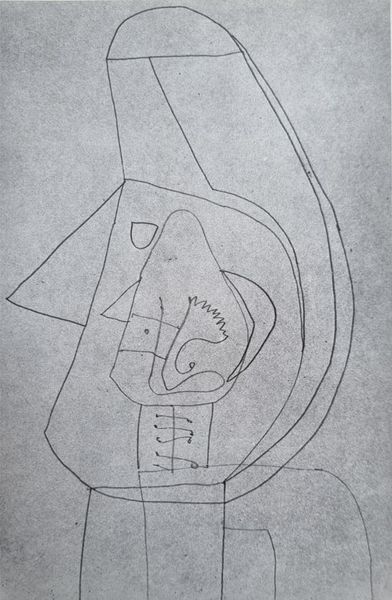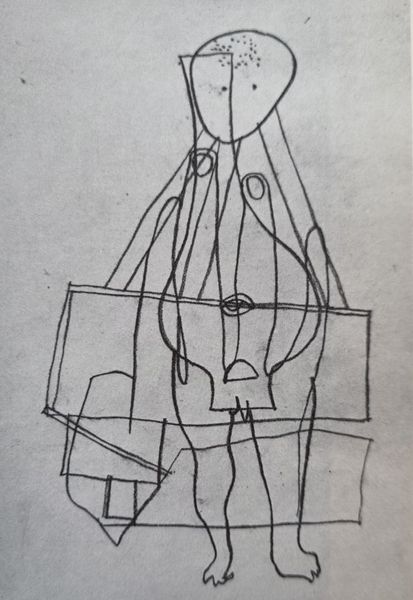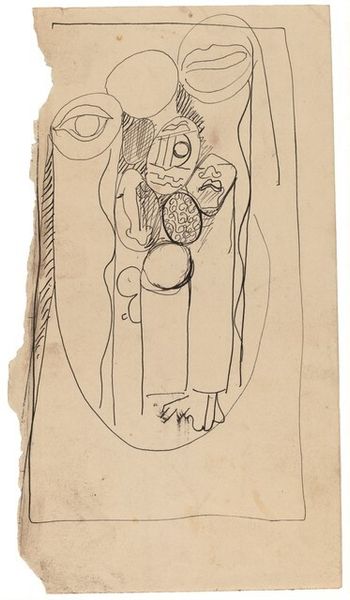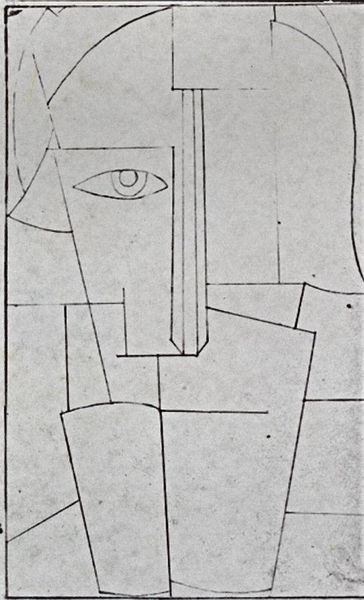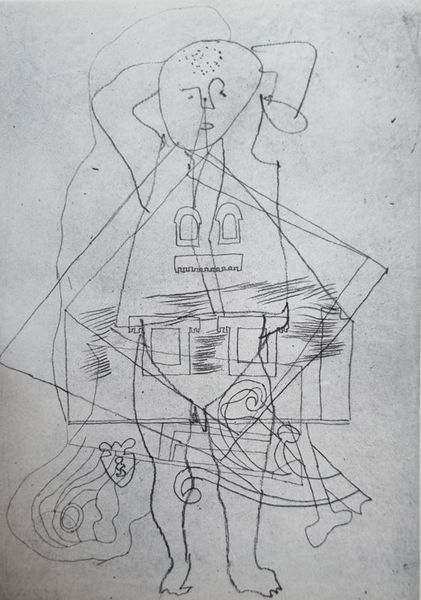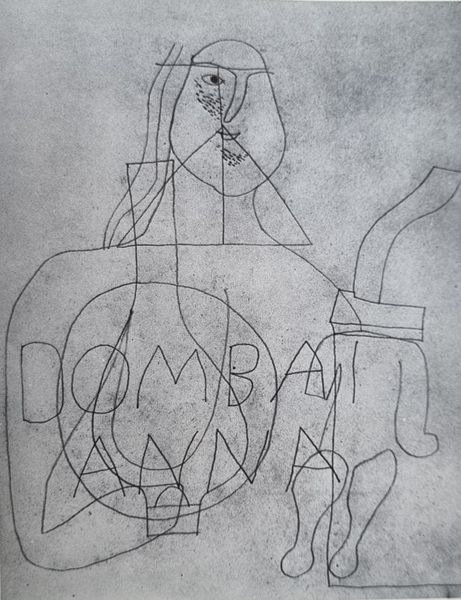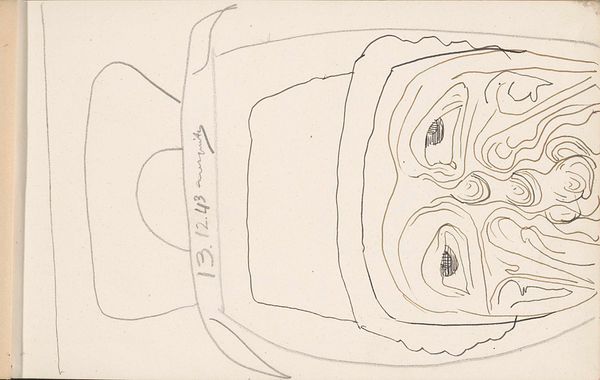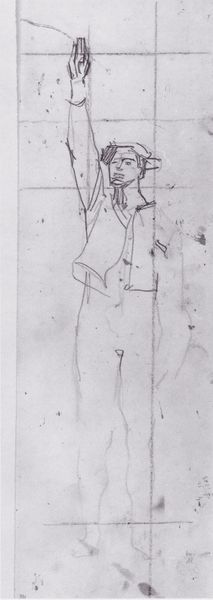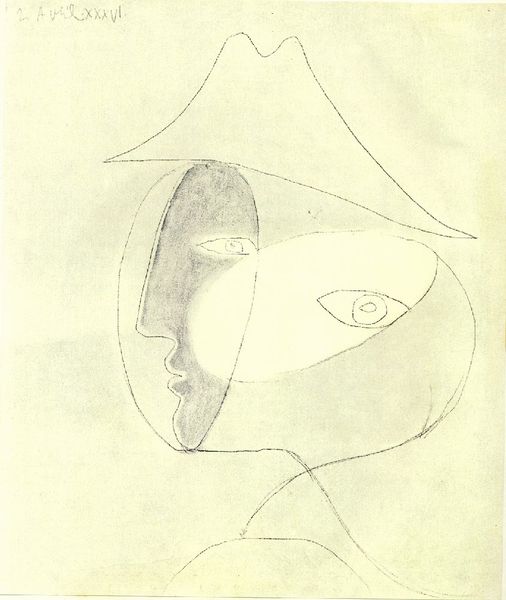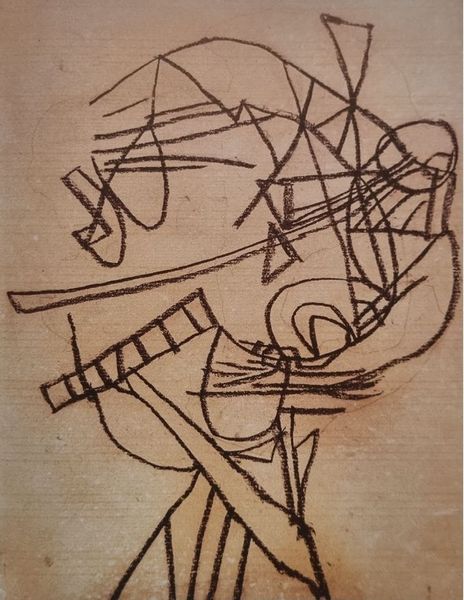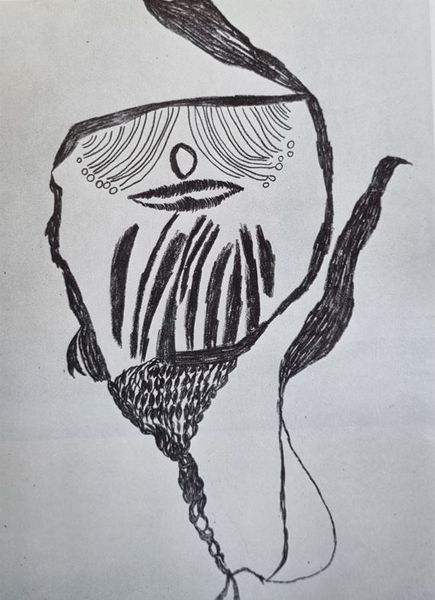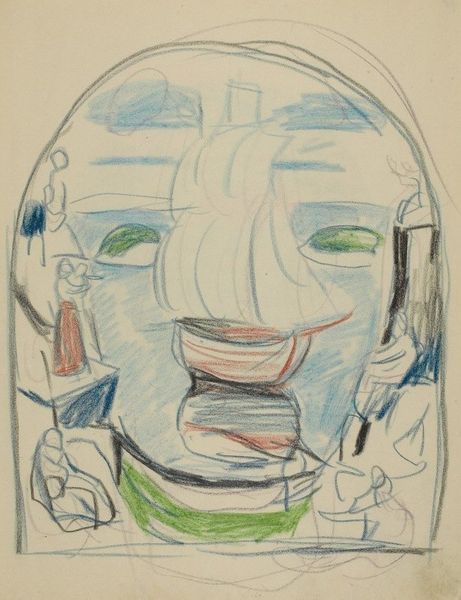
Vajda Lajos Madonna Torso and Jewish Egg Motif, 1937, Ink on Papr. 63.3x44.6cm 1937
Copyright: Public domain
Curator: Looking at Lajos Vajda’s “Madonna Torso and Jewish Egg Motif” from 1937, rendered in ink on paper, I'm struck by its ethereal quality. The sepia tones lend an antique, almost dreamlike feel to the piece. Editor: Dreamlike is a good way to put it. I’m finding the rawness unsettling; it reminds me of photographs of bodies during wartime or moments before state violence. But perhaps that’s a stretch. Curator: Not at all! The “Jewish egg motif” particularly holds rich symbolism, referring to rebirth and mourning simultaneously. Notice its placement: just above where facial features might be. Vajda was grappling with anxieties surrounding identity, cultural continuity, and loss, wasn't he? Editor: Exactly. Given that this piece was created on the eve of the Holocaust, interpreting this Madonna figure within that sociopolitical context becomes crucial. The “Madonna” isn't just a religious symbol, it embodies a people yearning for protection. Do you see any resistance here? Or primarily desperation? Curator: I'd say resistance is encoded, not overt. Look at how he blends Christian and Jewish iconography; it becomes a silent, visual language to reclaim heritage in dangerous times. And you also see him challenging the conventional religious depictions of both figures. The "torso" limits conventional representation. Editor: Yes, the disruption to the classic image of the Madonna carries weight. She is unfinished, interrupted, violated, standing in for a community under threat. And of course the fluid, transparent inks heighten the sensation of vulnerability, reflecting on Hungary’s fragile interwar period. Curator: Agreed. Its fragility also speaks to memory: how easily heritage and culture can be erased or forgotten, but that, at its essence, there remains indelible meaning for those willing to look. Editor: The cultural importance of those "eggs" makes it harder to ignore. But maybe, ultimately, that tension between loss and endurance is precisely what Vajda aimed to capture. The potential to start anew but from ruins and from within structures that oppress.
Comments
No comments
Be the first to comment and join the conversation on the ultimate creative platform.
